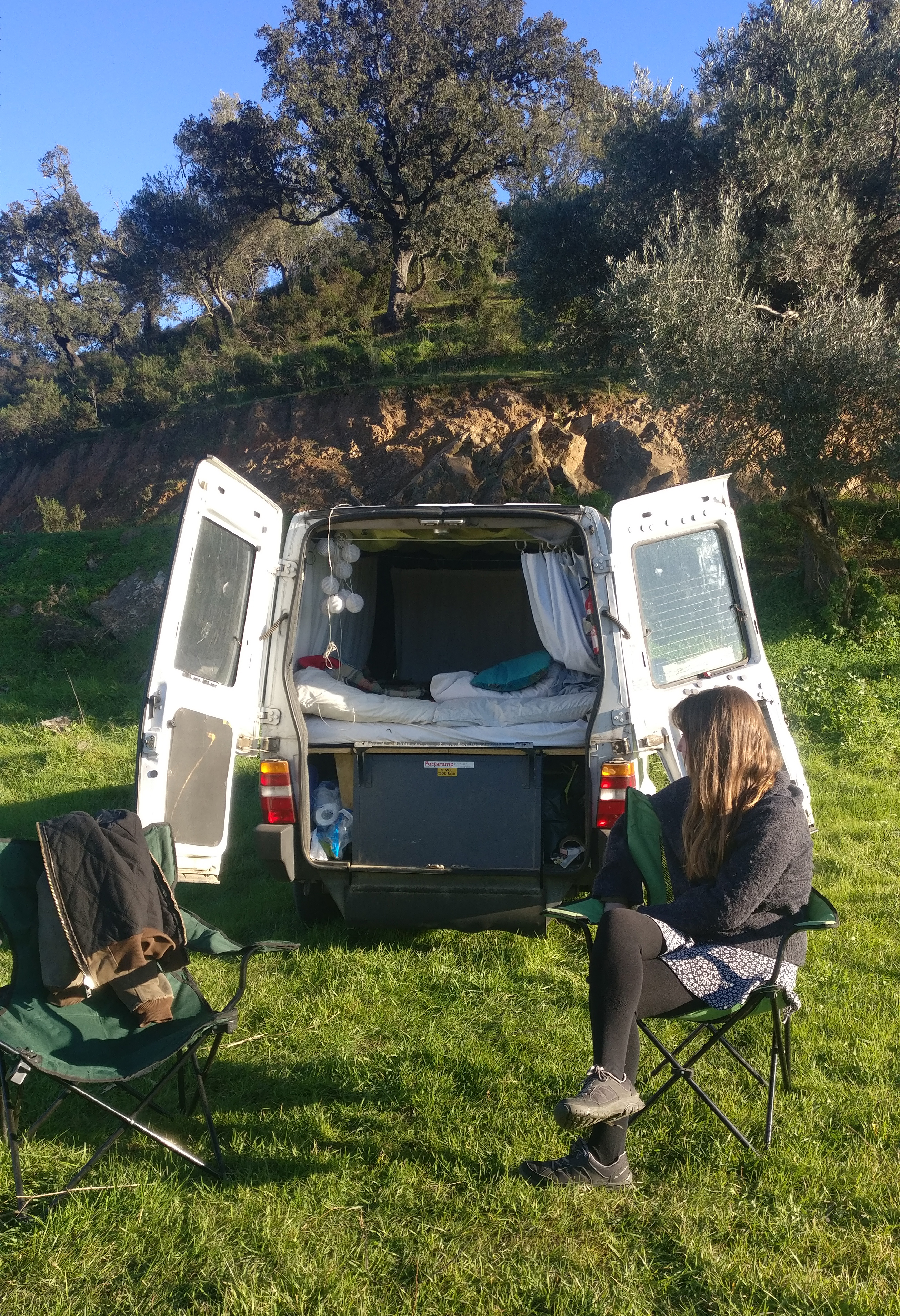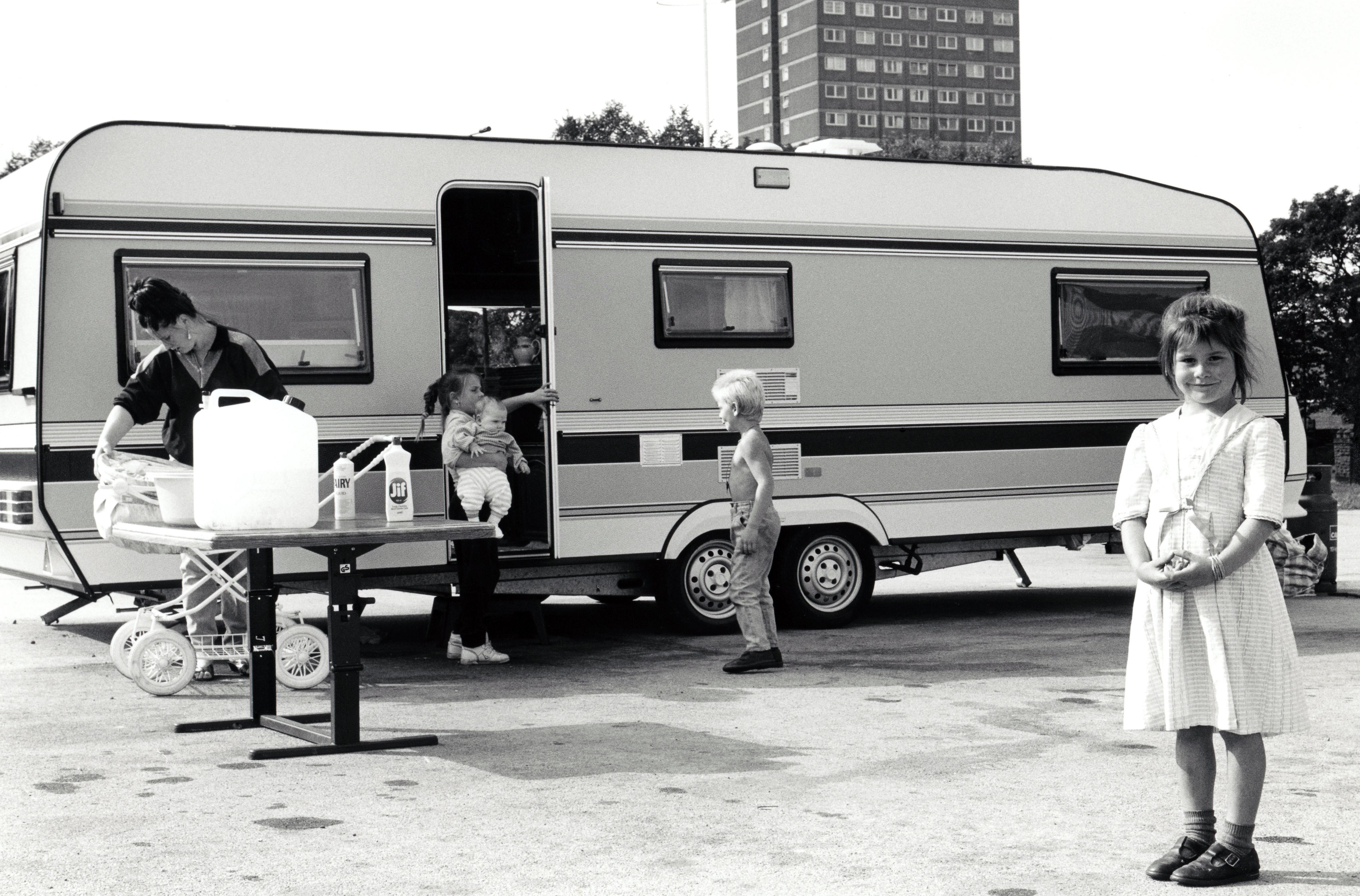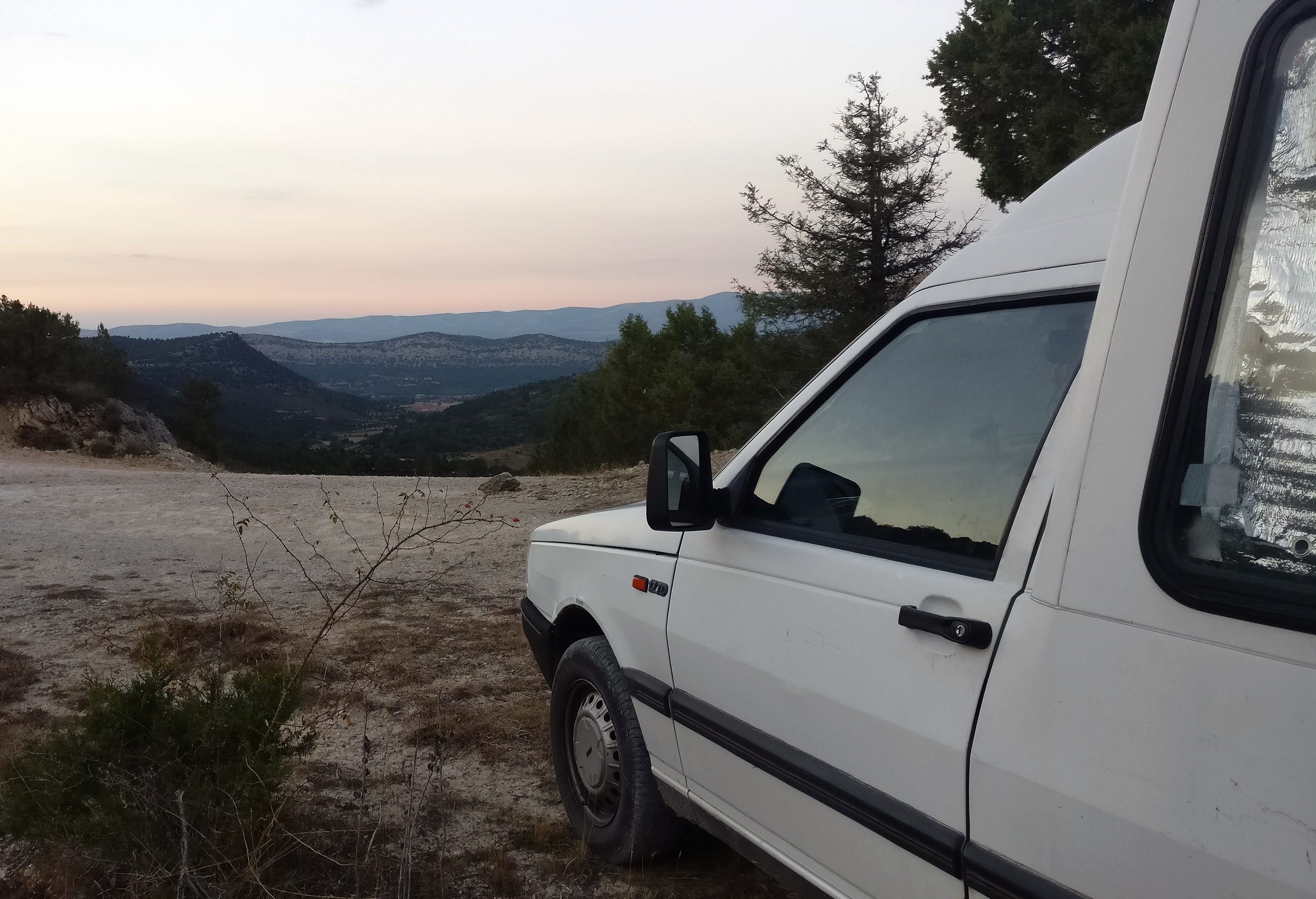The Reality of Living in the Back of a Van
Credit to Author: Tom Robinson| Date: Tue, 02 Jul 2019 17:46:48 +0000
VICE U.K. originally published this article.
It’s the heat and stuffiness that hits you first when you wake up every morning in the back of a van. The slightest hint of sunshine turns the small tin box we call home into a sauna, but all discomfort is forgotten when we push open the back doors and look out on a beautiful new vista. Our 1997 Fiat Fiorino once served as a disability vehicle for Lambeth Council. Now it’s our home and mode of transport as we explore the European countryside.
We’ve had our share of hiccups along the way, including a week of living in a Portuguese mechanic’s yard after our van broke down. But van-dwelling has given us the freedom and affordability we could never have dreamed of living in our old college town of Brighton, where the rent is going up almost 3.5 times faster than wages. Though it’s only temporary—we will return to renting once we start our master’s courses in autumn.
Until recently, those who lived on the road in the U.K. were typically Irish travelers, Roma people, or new age travelers. What these groups shared—outsider status and a strong rejection of mainstream society—got them hounded and demonized by the British government. Today, however, we are part of a resurgence in vehicle-dwelling—one linked closely linked to the current U.K. housing crisis—spreading among vastly different groups of people.
We’ve encountered all sorts of modern-day nomadic tribes on the road, with each one generally keeping themselves to themselves. There are the middle-class millennials priced out of the housing market; the retirees seeking sunnier pastures in their home-away-from-home RVs; the remnants and heirs of the new age travelers and ravers who have found Europe more welcoming after Britain criminalized nomadic ways of living in 1994; as well as people for whom vehicle-dwelling is a way to stay off the streets and keep a roof over their heads.

On social media, woodsy men and fairy girls in bikinis showcase their dreamy van-dwelling lives of deserted beaches and starry nights—the hashtag #vanlife boasts 5.4 million posts on Instagram. These pictures trade on the hippie imagery of the New Age travelers of the 70s and 80s but don’t engage with the politics; it’s an alternative lifestyle industry for millennials watching their dreams of homeownership dissipate in front of their eyes. Instagram posts are littered with sponsored links to travel flasks, clothing, apps to purchase vans, and video cameras to accessorize the trip of a lifetime. Alternatively, you can enjoy the temporary escape of nomadism for £120 [$151] per night in a 60s-era VW camper, go glamping in a mock “Gypsy caravan” or search for converted vans on Airbnb listed under the “unique stays” tab.
The original new age travelers were influenced by 60s counterculture. They built transient communities around shared values of spiritualism, anarchism, and ecology, and sustained through meet-ups, convoys, free festivals and pilgrimages to sacred sites. These beliefs and their free movement across private land put them in direct conflict with Margaret Thatcher’s government, with tensions coming to a boil at the Battle of the Beanfield in 1985. In the largest mass arrest of civilians since World War II, 1,300 police officers—including units specifically trained in public order and riot control—ambushed a convoy of 600 travelers on their way to the 12th annual Stonehenge Free Festival.
The travelers, desperate to escape the ambush, drove into a nearby field, where they became trapped. What followed was, as one visibly shaken eyewitness ITN journalist put it, “some of the most brutal action by police forces in Britain in a long time.”
Melanie, a 51-year old known to her friends as Scottish Mel, was driving to Stonehenge when she heard about the battle on the radio. “We spent the next few days trying to find where our pals were… Hospitals, police stations, it was horrible. People’s kids were taken away by the state and not told where to, their pets shot and killed.” Professor Kevin Hetherington, a sociologist and authority on New Age travelers, later found that 11 children were taken into care and numerous animals put down.
One unlikely witness to the violence was David Brudenell-Bruce, the Earl of Cardigan, who followed the convoy after they camped on his land the night before. He recalled police beating a pregnant woman with batons and smashing van windows and dashboards. “When I sought to write down the identification numbers of some of the worst offenders I saw to my horror and anger that many of the officers in question had their ID covered up,” he told the Independent. Later, when a group of travelers successfully sued the police for assault and criminal damage, the Earl was branded a “class traitor” by the Telegraph for testifying in court about what he had witnessed.
Melanie tells us that the Beanfield was part of a bigger picture of sustained “oppression and violence by the state from 1984 till 1994,” such as the heavy-handed eviction at Rainbow Fields Village in 1985 and the passing of the 1986 Public Order Act which made it easier for police and evict convoys. This attack on their lifestyle, she says, left “nearly all of us diagnosed with severe PTSD due to our experiences.”
New age travelers who remain on the road have now largely fled Britain for Europe. Today, Melanie lives in a house but tells us that her time spent traveling remains “the most cherished of all my memories” because of “the community, the nonjudgmental attitude of everyone and the freedom—although short-lived.”

It’s not only new age travelers who have faced the ire of the British establishment: Irish Travelers and Roma people, too, have faced a coordinated attack on their way of life. In 2004, Trevor Philips, the Commissioner for Race Equality, called this kind of discrimination the “last respectable form of racism,” comparing it to American segregation in the 50s. In 2017, a report by the Traveller Movement found that 91 percent of Roma people and Travelers faced discrimination because of their ethnicity.
Vehicle-dwelling can still serve as a lifeline for society’s most vulnerable, keeping a roof over their heads and providing a sense of stable community. Molly, 17, who currently lives in a van while working at a factory, tells us: “Homelessness leads a lot of people into the traveling community; they can find someone who will sell them a shabby caravan for a cheap price, and tow them from park to park with in the community while they get their lives back together instead of sleeping outside while on the waiting list for housing.”
In Bristol, which has the third highest homeless population outside of London, there is a growing number of homeless turning to van-living. The city has been hit particularly hard by the housing crisis, with rents in the city growing 250 percent faster than wages between 2011 and 2017, nearly triple the national average. The council has estimated there are 200 people living in vehicles, although one Bristolian van-dweller, Dan, 26, told us he would “put that figure closer to a thousand, at least.”

Dan, who works full-time in a homeless shelter, tells us that van living in Bristol is “generally pretty well accepted—I guess that’s because it’s been happening here for decades, and the people of Bristol are pretty progressive-minded.”
However, he says that van-living is more complicated than its aspirational hashtag suggests. “You’re quite vulnerable, on the side of the road, with cars and people buzzing past, centimeters from your sleeping head. One night, I woke up to two drunken men climbing the ladder on my back door. Another time, I woke up to someone reversing into me by accident, almost knocking me out of bed.”
He adds: “Generally speaking, if you’re permanently based in a city, you would probably rather have the security of a house to sleep in at night. But with rent rising year after year, and a city that seems to be bursting at the seams with occupants, people have had to get creative to keep a roof over their heads.”
Molly and Dan’s living situations are a far cry away from the politics of the new age travelers and today’s #vanlife influencers with their vintage VW campers and sponsored posts. What unites them all is a desire for greater freedom and a sustainable mode of living, whether born out of economic precariousness, political ideology, or aspirational commercialism. With the fraught history of government crackdown only a few decades in the past, however, their mileage—as the saying goes—may vary.
Sign up for our newsletter to get the best of VICE delivered to your inbox daily.
This article originally appeared on VICE UK.